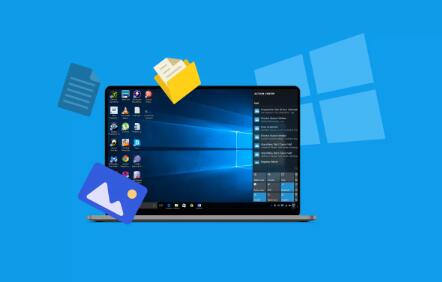Recovering deleted files from a shared drive can be a crucial task, especially for organizations that rely on collaborative workspaces.
1. Shared Drives
Before diving into recovery methods, it’s essential to understand what shared drives are. Shared drives (or network drives) allow multiple users to access and collaborate on files and folders stored on a central server. Commonly used in businesses and educational institutions, these drives facilitate seamless collaboration but can also pose challenges when files are accidentally deleted.
2. Reasons for File Deletion
Files on shared drives can be deleted for various reasons, including:
Accidental Deletion: Users may accidentally delete files while attempting to move or edit them.
Overwriting: New files can overwrite existing ones, leading to data loss.
User Permissions: Unauthorized users may delete files if permissions are not correctly set.
Technical Issues: Software bugs, hardware failures, or network problems can lead to file loss.

3. Initial Steps After Deletion
If you discover that files have been deleted, follow these initial steps:
Do Not Panic: Remain calm; many files can be recovered if acted upon quickly.
Stop Using the Drive: Refrain from adding or modifying any files on the shared drive to prevent overwriting.
Inform IT Support: Notify your IT department or data management team immediately. They may have protocols for recovery.
4. Check the Recycle Bin/Trash
Most shared drives, especially cloud-based services like Google Drive or Microsoft OneDrive, have a Recycle Bin or Trash feature where deleted files are temporarily stored.
Access the Recycle Bin:
For Google Drive: Navigate to the “Trash” in the left sidebar. Right-click the desired file and select “Restore.”
For OneDrive: Click on “Recycle Bin” on the left sidebar, select the file, and choose “Restore.”
5. Utilize Version History
Many cloud storage solutions and shared drive services maintain a version history for files. This feature allows users to revert to previous versions of a document, which can be especially useful if only the most recent changes are undesirable.
Google Drive: Right-click on the file and select “Manage Versions” to see previous iterations.
OneDrive: Right-click on the file, select “Version History,” and restore a previous version.
6. Recovery Tools for Shared Drives
Panda Assistant is an innovative data recovery software designed to help users retrieve lost, deleted, or corrupted files with ease. Whether you’re dealing with accidental deletions, formatting issues, or hardware malfunctions, Panda Assistant offers a user-friendly interface and powerful scanning capabilities to recover data from various storage devices, including external hard drives, USB drives, and memory cards.
What sets Panda Assistant apart is its advanced algorithms that not only locate lost files but also restore them in their original format, ensuring minimal data loss. The software supports multiple file types, making it versatile for personal and professional use. Additionally, Panda Assistant includes features like previewing recoverable files before restoration, which helps users identify the specific data they need.
How to Use Recovery Tools:
Install the Tool: Download and install the recovery software on a different drive to prevent overwriting data.
Select the Drive: Choose the shared drive from which you want to recover files.
Scan the Drive: Run a quick or deep scan based on the tool’s capabilities.
Preview and Recover: After scanning, preview the recoverable files and select the ones you wish to restore.
7. File Recovery from Cloud-Based Shared Drives
For shared drives managed through cloud services, the recovery process may vary slightly:
Google Workspace:
Use the Admin Console to restore deleted files within 30 days of deletion. Navigate to “Users,” select the user whose files were deleted, and access the “Drive” section to restore.
Microsoft SharePoint:
Deleted files can be retrieved from the SharePoint site’s Recycle Bin. Admins can also restore files from the Site Collection Recycle Bin.
8. Employing Backup Solutions
Regular backups are critical in preventing permanent data loss. Implement the following strategies:
Automated Backups: Set up automated backup schedules for shared drives to external hard drives or cloud storage.
Snapshot Features: Use snapshot features available in some cloud services to capture the drive’s state at specific intervals.
9. Prevention Measures
To minimize the risk of data loss in the future, consider implementing these best practices:
User Training: Educate users on proper file management practices to reduce accidental deletions.
Access Control: Limit permissions to sensitive files and directories, ensuring only authorized personnel can delete or modify content.
Regular Audits: Conduct regular audits of shared drives to ensure files are organized and recoverable.
About us and this blog
Panda Assistant is built on the latest data recovery algorithms, ensuring that no file is too damaged, too lost, or too corrupted to be recovered.
Request a free quote
We believe that data recovery shouldn’t be a daunting task. That’s why we’ve designed Panda Assistant to be as easy to use as it is powerful. With a few clicks, you can initiate a scan, preview recoverable files, and restore your data all within a matter of minutes.
Subscribe to our newsletter!
More from our blog
See all postsRecent Posts
- How to recover a deleted slide in powerpoint? 2025-02-27
- How to recover deleted capcut videos? 2025-02-27
- How to recover a file deleted from a shared drive? 2025-02-27










